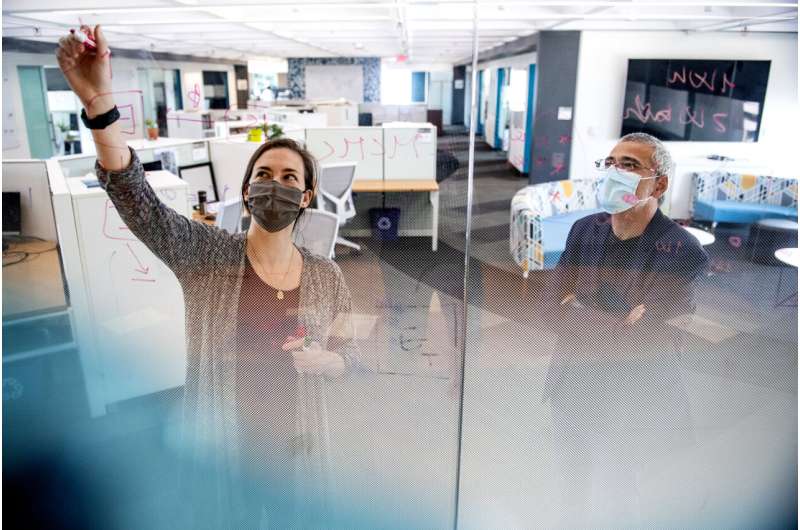Home » Health News »
How soon will the COVID-19 pandemic end? It depends.

Across the U.S., vaccines are going into arms. Mask and physical distancing guidelines are easing. And people are going back to work and school.
But is it time yet? Tentatively, yes, according to new research that projects possible scenarios for the future of the COVID-19 pandemic.
A team of infectious disease modelers at Northeastern has been answering that question for the U.S. government. Since January, the group has been developing a set of predictive models to project the future of the outbreak in various scenarios for the U.S. Centers for Disease Control and Prevention as part of a network of expert disease modeling teams across the country. Their results underpin policymakers’ decisions on when, how, and how quickly to lift pandemic restrictions.
“The numbers are, in a sense, encouraging,” says group leader Alessandro Vespignani, Sternberg Family distinguished university professor of physics, computer science, and health sciences, and also director of the Network Science Institute at Northeastern. “The numbers from the ground align pretty well with what we are seeing.”
On Wednesday, the CDC shared the latest projections from the team in the Morbidity and Mortality Weekly Report and during the White House press briefing by White House COVID-19 Response Team and Public Health Officials.
“Something I’m often asked is when will this pandemic be over and when will we go back to normal,” director of the CDC, Rochelle Walensky, said during the briefing. “The models forecasted some really good news, and an important reminder. The reality is it all depends on the actions we take now.”
This latest round of results projected the number of deaths, hospitalizations, and cases of COVID-19 overall for the six-month period from April to September 2021 in the U.S. across four different scenarios of vaccination rates and levels of non-pharmaceutical interventions (masks, physical distancing, etc.). At the beginning of this month, there were just under 350,000 new COVID-19 cases in a week. Under a low vaccination, low non-pharmaceutical intervention scenario, Northeastern researchers project that weekly national cases could drop to about 125,000 by July. But if vaccination rates are high, weekly cases could drop below 50,000 by July and might even drop below 10,000 by August, under the most optimistic scenarios.
So far, the projections have “held the test of time,” Vespignani says.
“At the end of March, the results were telling us there could be bumps on the road,” he says. Depending on how quickly a state reopens, and the spread of new variants of the coronavirus, such as the B.1.1.7. variant that was first detected in the U.K., the models were suggesting possible surges in cases. And indeed, in April, “this is what happened. We started to observe this surge of cases and a bit of surge of hospitalizations.”
But, notably, Vespignani says, death rates and more severe cases are going down. “There was a decoupling between the number of cases and the deaths and hospitalizations,” he says. And this reflects vaccination rates against SARS-CoV-2, the coronavirus that causes COVID-19 in more vulnerable populations. “The vaccination was protecting the people that were the most at risk,” he says. “Those vaccines are working like a charm.”
The alignment of the scenarios and real data is a hopeful sign, as the models suggest that something resembling normal life could resume by July in the U.S. if people proceed cautiously, Vespignani says.
Or, Walensky said, we could return to normal sooner, if enough people get vaccinated quickly. “The results remind us that we have the path out of this,” she said, “and models once projecting really grim news now offer reasons to be quite hopeful for what the summer may bring.”
Five weeks into this latest set of scenario projections, Vespignani says, the future is brightening. “We see a sustained decrease of cases in most of the places, and states that had a bit of surge were quickly reverting to smaller numbers in the last week or so.”
Source: Read Full Article



